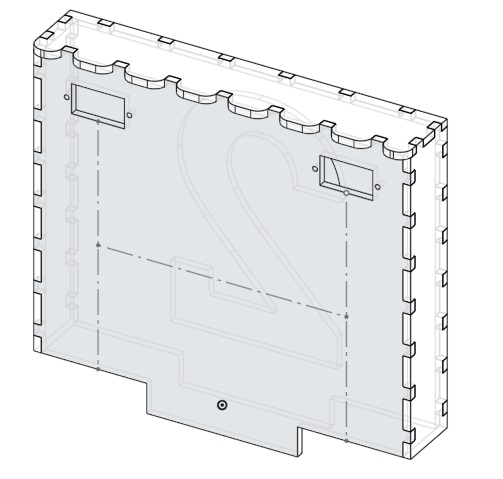chassis

The final chassis design has all of the features necessary for every other module to attach. It also incorporates useful holes for screws or wires and slots for any necessary adjustments when mounting other parts.
The large box on the back holds the TINAH computer board as well as the Barber-Coleman motors for the back wheels. Because all of the wiring goes to the TINAH, we had to consider where to put useful holes to run the wiring down the chassis neatly.
This design took many iterations as more and more features needed to be added. However, because of the modular design, the chassis was the only thing that would need to be changed and everything else could be worked on separately.





